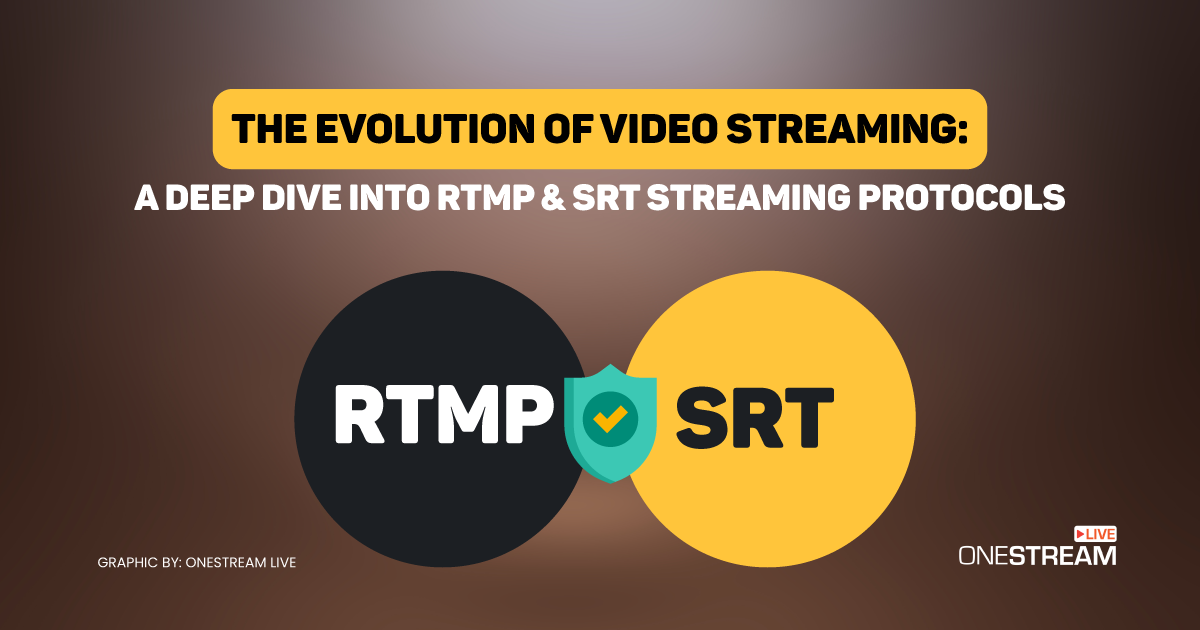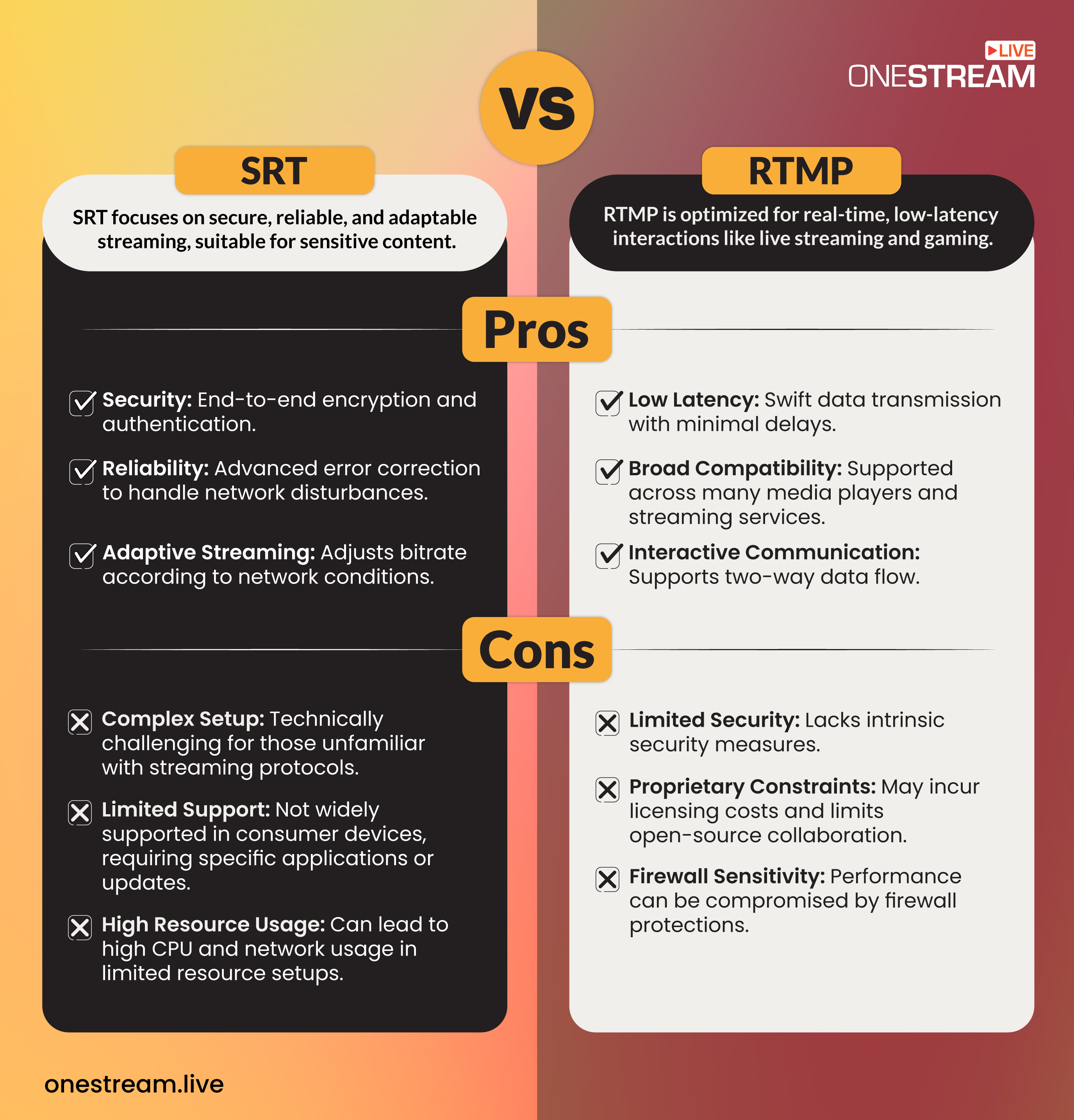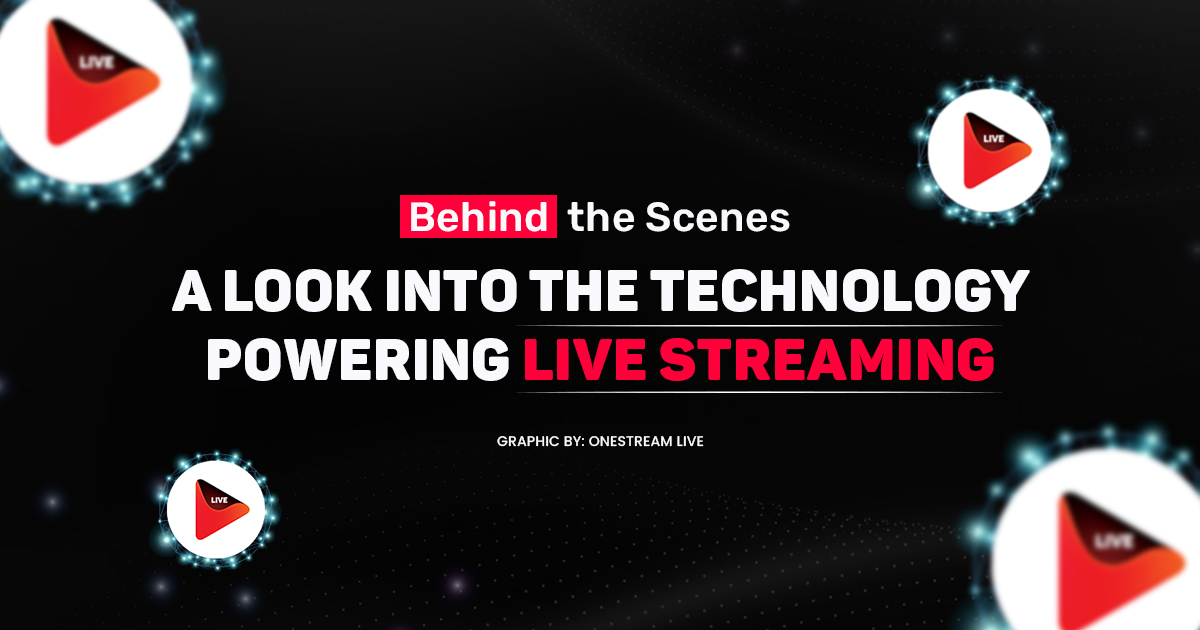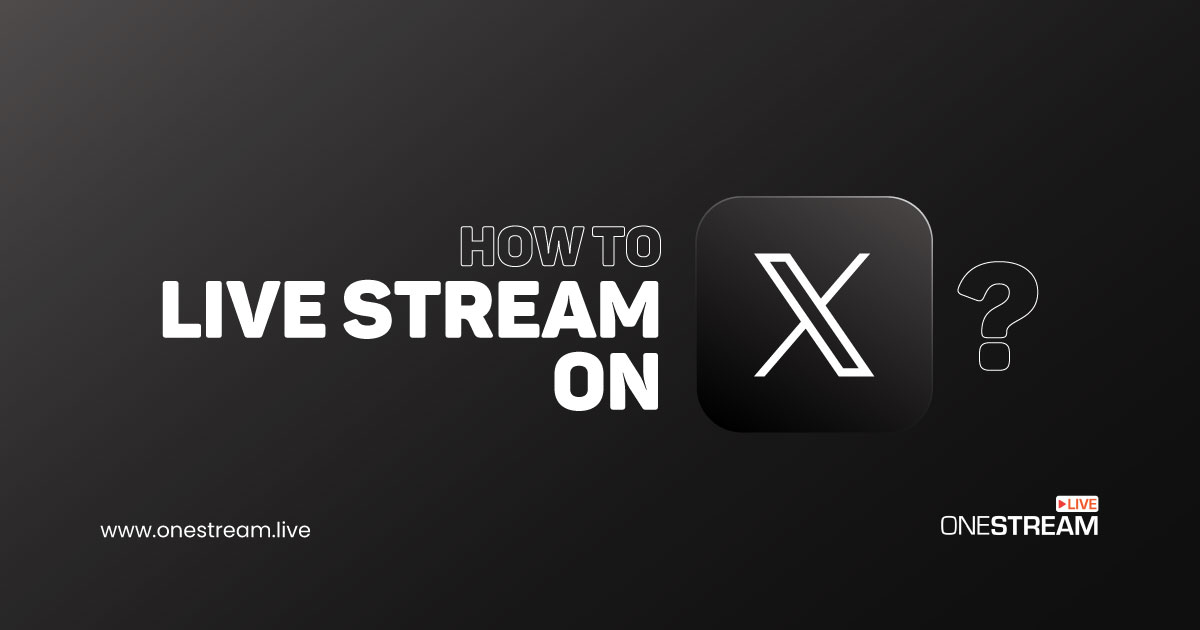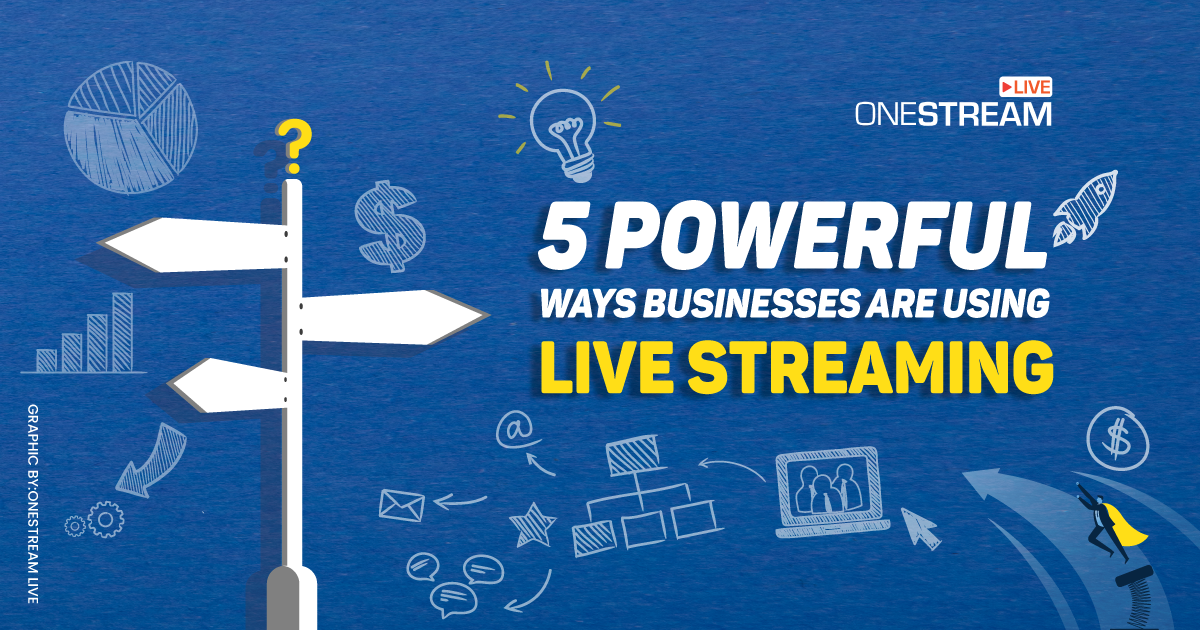Today, it is almost certain that anyone operating in the internet media or video distribution industries will engage with streaming protocols. The size of your audience is continually expanding, whether you are streaming movies, hosting live webinars, or developing video games. According to Research and Markets, the live streaming pay-per-view market is not just growing, but it’s poised to surge from $1.4 billion in 2023 to $1.63 billion in 2024, indicating a compound annual growth rate (CAGR) of 16.6%.
In this Article:
Various factors, including the widespread availability of broadband internet, the ubiquity of smartphones and devices, the global reach of content, shifts in consumer preferences, and collaborations in sports and entertainment, drive this exponential growth. The market is projected to reach $3.09 billion in 2028 at a CAGR of 17.4%, propelled by advancements such as adopting 5G technology and integrating virtual and augmented reality (Research Markets).
Additionally, a report highlighted by GlobeNewswire mentions that the global live streaming market was anticipated to grow from $1.03 billion in 2021 to $1.23 billion in 2022, a CAGR of 20.3%. It is expected to reach $2.61 billion in 2026 at a CAGR of 20.5% (GlobeNewswire). Moreover, a report by Maximize Market Research stated the live streaming market size was $47.43 billion in 2022, indicating a broader scope of the market beyond just pay-per-view content (MAXIMIZE MARKET RESEARCH).
Unveiling the Details of Revolutionary Streaming Protocols
Streaming protocols play a crucial role in multimedia experiences on the internet. They dictate the method of data transmission from a media source to the end user’s device, enabling real-time playback without downloading the entire file. These streaming protocols are designed to tackle the challenges of various network conditions, ensuring a smooth and uninterrupted streaming experience.
Video streaming protocols are meticulously crafted to facilitate the efficient delivery of video content. They consider crucial factors such as quality, reliability, and latency to ensure a seamless viewing experience. These streaming protocols serve as the foundation of streaming platforms, empowering users to indulge in high-definition live broadcasts, engage in video conferences, and watch videos in real-time.
What Do SRT and RTMP Mean?
Real-Time Messaging Protocol (RTMP) and Secure Reliable Transport (SRT) are ways to stream voice and video over the Internet. Still, they are used for different things and have different features. Haivision created SRT to send safe, high-quality video streams over unreliable networks like the Internet. It does this by effectively handling packet loss, latency, and jitter to ensure the content is intact and in real-time. It works especially well for streaming when network conditions are bad.
RTMP, on the other hand, was created by Macromedia and later bought by Adobe. In the beginning, it was the usual way to stream. It lets a video server and a Flash player or server talk to each other quickly, which makes it good for live streaming events. However, as technology changes, more up-to-date streaming protocols like SRT are slowly replacing RTMP. These streaming protocols offer better security and reliability in various network conditions. However, RTMP is still widely used for streaming to platforms that accept it.
Getting to the Core of Streaming Protocols
The contrasting strengths and weaknesses of SRT and RTMP guide their distinct uses.
SRT
SRT’s end-to-end encryption and adaptive bitrate control guarantee data security and uninterrupted streaming in unpredictable network environments. In 2013, it emerged from the necessity to reduce the expenditure associated with private networks’ and satellites’ contributions. SRT shines when safely transmitting media files with low latency across uncertain internet connections. Video and audio streams may be quickly recovered, and data remains secure because to its end-to-end encryption, which is based on AES 128/256 encryption.
With SRT, problems like packet loss, jitter, and bandwidth limits are no longer an issue during live video transfer. Using cutting-edge retransmission algorithms for packet loss recovery, SRT offers a dependable and safe alternative for low-latency video transfer. In addition to facilitating firewall bypass and end-to-end network health monitoring, the streaming protocol guarantees accurate timing recovery for audio and video streams.
RTMP
RTMP does not have security protections but offers low-latency performance and bidirectional data flow. The streaming protocol based on TCP achieves its goal of quicker data delivery by dividing the stream into smaller pieces. Another option is to implement RTMP ingest, which can transmit live video streams to a media server for online broadcasting by combining RTMP with additional streaming protocols such as HLS or DASH. However, Content Delivery Networks (CDNs) increasingly favor other streaming protocols over RTMP, such as HLS and MPEG-DASH.
Read More: RTMP Encoder Streaming: A Comprehensive Guide for Beginners
Evaluation of SRT Vs. RTMP Streaming Protocols
Depending on the use case and business requirements, the results of several experiments comparing the two streaming protocols in streaming applications demonstrate particular advantages and disadvantages.
End-to-end Latency
Several tests comparing RTMP to SRT indicated that SRT has lower end-to-end latency. Aside from being over twice as fast, SRT streams could be up to five to twelve times quicker than RTMP streams when using specialized hardware for encoding and decoding.
The High Definition Video Quality
Regarding video quality, RTMP performed admirably when the transmitter and receiver were located on the same continent, thanks to the increased bandwidth utilized for streaming. While SRT had no issues streaming at 20 Mbps to locations across the globe, it failed at long distances at bitrates beyond 2 Mbps.
SRT Vs. RTMP Streaming Protocols: Pros and Cons
SRT: Pros and Cons
SRT stands out in the streaming landscape for its dedication to security and flexible streaming capabilities, making it a preferred choice for handling sensitive content. Its rising popularity among streaming professionals can be attributed to its focus on ensuring secure, reliable, and adaptable streaming experiences.
Pros:
- Security: SRT’s implementation of end-to-end encryption and authentication streaming protocols protects content from unauthorized access throughout its transmission.
- Reliability: Thanks to its advanced error correction features, SRT is exceptionally good at overcoming network disturbances, ensuring seamless playback.
- Adaptive Streaming: The streaming protocol’s ability to adjust the bitrate according to the viewer’s network condition means it consistently delivers the highest viewing experience possible.
Cons:
- Complex Setup and Configuration: Implementing SRT can be technically challenging, especially for users unfamiliar with streaming protocols.
- Limited Support in Consumer Devices: SRT support in consumer-grade hardware and software is limited. This means end-users might need specific applications or updates to receive SRT streams, which can hinder widespread adoption.
- High Resource Usage: SRT is designed to optimize streaming performance, sometimes leading to high CPU and network resource usage. This might not be an issue for professional setups with dedicated hardware. Still, it can be problematic for smaller operations or when trying to stream from devices with limited resources.
RTMP: Pros and Cons
RTMP delivers low-latency interactions, ideal for real-time streaming and gaming applications.
Pros:
- Low Latency: The technology stands out for its swift data transmission, ensuring minimal delay in live streams, gaming, and interactive platforms.
- Broad Compatibility: RTMP is widely supported across various media players and streaming services, offering extensive reach for content distribution.
- Interactive Communication: It supports two-way data flow, catering to applications requiring user interaction.
Cons:
- Limited Security: RTMP lacks intrinsic security measures, leaving it susceptible to potential cyber threats.
- Firewall Sensitivity: RTMP’s performance can be compromised by firewall protections, leading to connectivity challenges.
- Proprietary Constraints: The streaming protocol’s proprietary nature may incur licensing costs and restrict open-source collaboration or enhancements.
Wrapping up
In 2024, which streaming protocol will be the most effective for streaming videos? You get to decide. Various businesses have different needs when it comes to video technologies. Finding the most adaptable video platform should precede researching the finest streaming protocols. Reducing latency, increasing playback compatibility, and tackling distant video contribution difficulties require diverse streaming protocols. Let’s venture into some forecasts. It’s becoming increasingly clear that RTMP’s days are numbered, and we might be off the mark so that SRT could sweep the board! Since each has advantages and disadvantages of its own, you can utilize any one based on your requirements. But instead of stressing out over this technical stuff, you can use OneStream Live and enjoy your streaming journey.
OneStream Live is a cloud-based live streaming solution to create, schedule, and multistream professional-looking live streams across 45+ social media platforms and the web simultaneously. For content-related queries and feedback, write to us at [email protected]. You’re also welcome to Write for Us!

